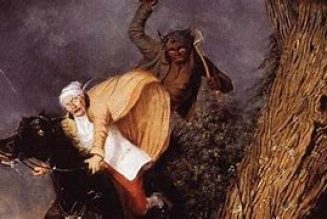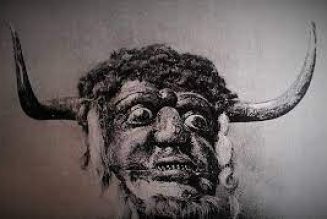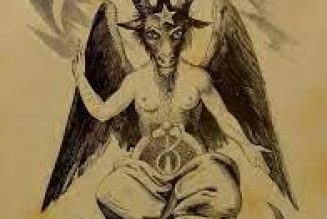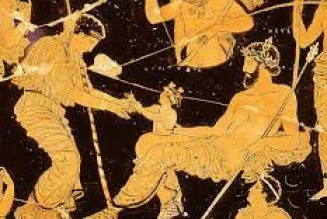Lupercus, though not a central figure in most historical witchcraft texts, is a deity associated with fertility, wild nature, and ritual. His presence is noted in Roman mythology, particularly in contexts where the boundaries between the human and the wild blur. Themes of fertility, protection, and the untamed spirit of nature are rooted in both ancient paganism and modern witchcraft practices.
In Roman mythology, Lupercus was revered as a pastoral guardian, protector of flocks and herds, and a defender against wolves. He was depicted as a youthful figure, often crowned with leaves or animal pelts, embodying the primal energy of the wilderness. Lupercus was associated with the Greek god Pan, the horned god of shepherds and rustic music, and the Italic god Faunus, who presided over forests, fields, and fertility. These deities shared a connection to the wild forces of nature, reflecting humanity’s respect and fear of the unknown.
The festival of Lupercalia, held in February, was the most prominent celebration dedicated to Lupercus. Lupercalia was one of the oldest festivals in Rome, predating the city’s founding. It was a time for purification, fertility, and protection for the coming year, reflecting the agrarian values of Roman society. The festival’s rituals were dramatic and symbolic, blending ancient myth with communal celebration.
During Lupercalia, priests known as the Luperci gathered at the Lupercal cave on the Palatine Hill. According to legend, this cave was where the she-wolf, or lupa, nursed the twins Romulus and Remus, founders of Rome. The rituals began with the sacrifice of goats and a dog. The blood of the animals was smeared on the foreheads of the Luperci, who then wiped it away with wool dipped in milk, symbolizing the transition from death to new life.
The Luperci cut strips from the goat hides, fashioning them into loincloths and thongs called februa. Clad in these garments, the priests ran through the streets of Rome, striking bystanders—especially women—with the goat-hide thongs. This ritual was believed to bestow fertility, ease childbirth pains, and ensure prosperity for the year ahead. Women often stepped forward willingly to receive the blessing.
Lupercus’s connection to the cycles of nature, the renewal of life, and the wild spirit of the earth resonates with many aspects of witchcraft. Modern practitioners often honor ancient deities like Lupercus when celebrating the earth’s rhythms, the return of spring, or seeking blessings for growth and abundance. The imagery of the wild god—half-animal, half-man, running free through the woods—serves as a reminder of the primal forces that shape the world.
In contemporary pagan and witchcraft traditions, Lupercus may be invoked in rituals focusing on fertility, animal protection, and the celebration of the earth’s cycles. Offerings of bread, milk, honey, or symbolic goat imagery might be placed on altars to honor his spirit. Some practitioners create rituals echoing the themes of Lupercalia, such as ritual purification with water or milk, the symbolic use of animal hides, or group ceremonies celebrating the renewal of life and the coming of spring. These modern rites blend ancient symbolism with personal intention.
For example, a solitary witch might meditate in a quiet woodland, calling upon Lupercus for guidance in matters of fertility or protection. A coven might gather around a bonfire, sharing bread and milk as offerings, and incorporating goat imagery into their ritual tools or clothing. Some groups reenact the playful aspect of Lupercalia, using strips of cloth or ribbons to symbolically “bless” one another with abundance and vitality.
While Lupercus may not be as widely recognized as other deities in witchcraft, his legacy endures in the themes of fertility, protection, and the wild aspects of nature. These qualities continue to inspire those who seek to connect with the ancient roots of their craft, reminding us that the wildness of the earth is not something to be feared, but embraced and celebrated. In rituals that honor the cycles of life, acts of protection for the vulnerable, and celebrations of the return of spring, the spirit of Lupercus is present.


























